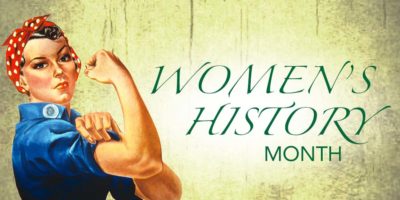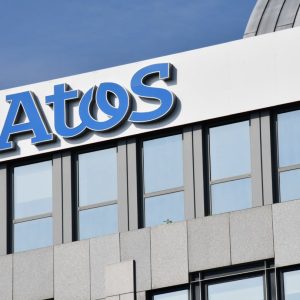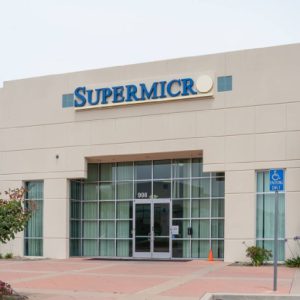
As we are drawing to the end of Women’s History Month, it is essential to take note of the top influential pioneers who aided the transformation of the tech industry and still have a strong impact in today’s world of tech.
Focusing particularly on women, even though there are minimal women in the tech industry, and also in STEM, there is a continuous desire to address the decline in interest from young girls to STEM subjects/careers.
Before this uprising, strong female pioneers used their skills to bring about a transformation in the first place; could there even be such a thing as women in tech if not for influential females who conquered roles such as the ‘the first computer programmer’ or ‘the first tech lecturer’?
Even within the ever growing presence of digital transformation, many of these female pioneers still have an ongoing legacy which remains within the industry.
CBR lists 10 of the most influential female Tech pioneers, who’s names are still heard of today in the industry in one way or another.
Read more: #BeBoldForChange: Women in tech explain what International Women’s Day means to them
Ada Lovelace
First is highly recognised computer programmer Ada Lovelace, who was the first to create an algorithm for the first computer program machine in the mid-1800s.
Referred to as the ‘Prophet of the Computer Age’, Lovelace had educational interest in science and maths as a child which led to her friendship with Cambridge mathematics professor, Charles Babbage, who invented a calculating machine.
 Although Lovelace didn’t receive much recognition during her life, she began to influence modern computer science and the technology industry from the 1950s.
Although Lovelace didn’t receive much recognition during her life, she began to influence modern computer science and the technology industry from the 1950s.
Today, Ada the National College for Digital Skills, which opened in September 2016, is aimed at recruiting young students over the next five years for a wide range of digital careers such as software and database developers, user experience designers and tech entrepreneurs.
In line with its digital strategy, the UK government is to fund Ada to develop a primarily online learning platform by summer this year. This is to pilot innovative techniques, gamified content and peer-to-peer elements to develop coding skills.
The Ada College is to also partner with Google to launch the Higher Level Apprenticeship in Digital Innovation Program, which will offer software engineering careers to students with a passion to experience working for a tech company whilst studying for a degree in Computer Science.
Grace Hopper
Grace Hopper was also a computer programmer, who helped develop the first computer language compiler which led to the creation of the Common Business-Oriented (COBOL) language.
Prior to this, computers only spoke in binary code that humans were unable to understand so Hopper decided to change this by creating new kinds of readable programming language which would make programming more accessible and enjoyable for people to become more interested in the field.
 Hopper’s legacy still stands as many of the programming languages that she helped to create are still used by government agencies and IT leaders that aim to modernise their IT systems.
Hopper’s legacy still stands as many of the programming languages that she helped to create are still used by government agencies and IT leaders that aim to modernise their IT systems.
In memory of Hopper, is The Grace Hopper Celebration of Women in Computing, which is the largest convention for female Computer Scientists and Technologists to date. The convention is hosted yearly in USA and offers a range of educational and professional development courses and workshops. This also includes a lesson on compilers, invented and pioneered by Hopper.
Another form of recognition was formed by female employees at Microsoft who set up an employee group named Hoppers and also established a scholarship in honour of Grace Hopper. The group now has over 3000 members worldwide.
Wondering what other women stood their ground as pioneers in tech?
Joan Clarke
Joan Clarke was formerly known as a Cryptanalyst and Numismatist, and also for her work as a code-breaker at Bletchley Park during the Second World War.
Following her recruitment to the Government Code and Cypher School (GC&CS), Clarke worked at Bletchley Park and quickly became the only female practitioner of the cryptanalytic process.
There were said to be over 6,700 women working in Bletchley and its outstations, which formed more than 75 percent of the total workforce.
 Joan Clarke continued her career in codebreaking after the war at GCHQ and was awarded an MBE for her contributions during the war.
Joan Clarke continued her career in codebreaking after the war at GCHQ and was awarded an MBE for her contributions during the war.
Clarke also took part in the Enigma project against Nazi Germany’s secret communications. This was an electro-mechanical machine used by the German military to encrypt and decrypt messages
Clarke and other influential women who worked at Bletchley Park are still used as key examples for young females in Tech to look up to, for instance Kerry Howard, Bletchley Park researcher said:
“Women like Margaret Rock, Joan Clare and Mavis Lever are marvellous examples of women meeting their potential in a time of conflict, opening the door to long careers in codebreaking that they would never have been exposed to before the war.
“These are inspiring role models for young women considering careers in STEM, where there are more opportunities than the Bletchley women could ever dream of.”
Radia Perlman
Referred to as the “Mother of Internet,” Radia Perlman is a Software Designer and Network Engineer who helped in developing Ethernet technology to become a household name.
 In 1985 she also developed a spanning tree algorithm to enable the scalability of network traffic using Ethernet. This also made it possible to transform the technology from its limited capacity to being able to connect a large numbers of computer systems into a network.
In 1985 she also developed a spanning tree algorithm to enable the scalability of network traffic using Ethernet. This also made it possible to transform the technology from its limited capacity to being able to connect a large numbers of computer systems into a network.
Perlman has her own inventions, named TORTIS (Toddler’s Own Rescue Turtle Interpreter System) which is a child-friendly robotic language that helps young programmers-to-be to learn about computers. Following this, Perlman has been described as a pioneer of teaching young children computer programming.
Radia Perlman currently holds more than 100 patents and has received various awards, including induction into the National Academy of Engineers and the Internet Hall of Fame.
Perlman now works for Dell EMC and is part of the company’s plan to provide inspiration to the next generation of aspiring engineers.
Edith Clarke
The first female Electrical Engineer and the first female professor of Electrical Engineering at the University of Texas, Edith Clarke specialised in electrical power system analysis.
After being unable to pursue a career as an engineer, Clarke went on to work for General Electric as a supervisor of computers within the Turbine Engineering Development.
 One of her fascinating inventions included the Clarke calculator, which was a simple graphic device that solved equations involving electric current, voltage and impedance in power transmission lines that she invented in her spare time.
One of her fascinating inventions included the Clarke calculator, which was a simple graphic device that solved equations involving electric current, voltage and impedance in power transmission lines that she invented in her spare time.
The calculator was able to solve line equations involving hyperbolic functions ten times faster than previous methods. It also enabled engineers and analysts to solve equations easier and characterise long transmission lines accurately.
This tool assisted Clarke’s work to gather data about the power grid and can still be seen as the first step towards smart grid technology.
In 2015, Clarke was elected entry into the National Inventors Hall of Fame for the invention of the Clarke calculator.
Who was the first African-American female to travel to space?
Mae Carol Jemison
Mae Carol Jemison was an American Engineer, Physician and NASA astronaut. Jemison became the first African-American woman to travel in space following her time in orbit aboard the Space Shuttle Endeavour in 1992.
 Jemison was one of the 15 chosen for the astronaut program after reapplying in 1987. Her work with NASA before the shuttle launch included launch support activities at the Kennedy Space Centre in Florida and verification of the Shuttle computer software in the Shuttle Avionics Integration Laboratory (SAIL).
Jemison was one of the 15 chosen for the astronaut program after reapplying in 1987. Her work with NASA before the shuttle launch included launch support activities at the Kennedy Space Centre in Florida and verification of the Shuttle computer software in the Shuttle Avionics Integration Laboratory (SAIL).
Jemison was a Professor-at-Large at Cornell University and was also formerly a professor of Environmental studies at Dartmouth College from 1995-2002. Having a strong passion for Science and Technology, Jemison saw the two as a strong part of society.
In 1993, Mae Jemison founded her own company named The Jemison Group, known to research, market and develop science and technology for day-to-day life.
In 1994 she founded an international science camp for students aged 12 to 16 named ‘The Earth Wed Share’ (TEWS) and has since the been regarded as a STEM pioneer as Jemison’s legacy continues to pave the way for women and minorities to pursue careers both in STEM and space.
Mary Kenneth Keller
Referred to as a pioneer in Computer Science, after receiving her master’s degree in mathematics and physics, Keller began working at the National Science Foundation workshop in the computer science centre at Dartmouth College.
It was at this male-only institution that Keller participated in the development of the BASIC programming language.
 In 1965, Keller also became the first woman in the US to earn a Phd in Computer Science.
In 1965, Keller also became the first woman in the US to earn a Phd in Computer Science.
Keller went on to found the department for Computer Science at Clarke College. The college now has the Keller Computer Centre and Information Services dedicated to Keller to provide telecommunication support to Clarke college students, faculty members and staff.
The college also offers the Mary Kenneth Keller Computer Science Scholarship in her honour. Keller was also formerly an advocate for women in computing and helped to establish the Association of Small Computer Users in Education (ASCUE).
Carol Shaw
Carol Shaw was the first female video game designer, who began her career working as a Microprocessor Software Engineer at Atari.
Following this, Shaw joined Activision where she developed her most popular game ‘River Raid.’
 From a young age Carol Shaw showed interest in maths subjects despite being the only female amongst a herd of males. This followed on till she went to receive her masters’ degree in Computer Science.
From a young age Carol Shaw showed interest in maths subjects despite being the only female amongst a herd of males. This followed on till she went to receive her masters’ degree in Computer Science.
Shaw’s passion for gaming also grew from school as she was able to write basic programs and play video games in the computer lab.
When beginning her career in game design, Shaw was hired to create the whole game from start to finish, which would include programming, graphics and sound.
The first game created by Carol Shaw to hit the market was 3D Tic-Tac-Toe, taking just six months to create. This game saw the unique feature of artificial intelligence with limited RAM.
Who was the first woman to receive a software patent?
Jean Jennings Bartik
Jean Jennings Bartik was one of the original programmers for the Electronic Numeric Integrator and Computer (ENIAC) computer which she began after studying mathematics at school.
 Her first job which she began at the University of Pennsylvania is where her and her colleagues developed and codified many of the key factors of programming, while working on the ENIAC as it was the first computer of its kind.
Her first job which she began at the University of Pennsylvania is where her and her colleagues developed and codified many of the key factors of programming, while working on the ENIAC as it was the first computer of its kind.
Bartik was chosen as part of the team and later became the co-lead programmer to run the ENIAC, without a manual the group reviewed diagrams of the device, interviewed engineers and then used the information to teach themselves the sills needed.
As Bartik and the other women worked on ENIAC, they developed subroutines, nesting and other necessary programming techniques, along with the invention of the discipline of programming digital computers.
After this, Bartik went on to help in developing the BINAC and UNIVAC 1 computers.
Erna Schneider Hoover
Erna Hoover was one of the first women in the US to receive a software patent when she was given a patent for a computerised telephone switching system in 1971.
The computerised telephone switching method developed by Hoover was one which was described as one to revolutionise modern communication.
 It was developed to prevent system overloads by monitoring call centre traffic and prioritising tasks on phone switching systems, for more robust service during peak calling times.
It was developed to prevent system overloads by monitoring call centre traffic and prioritising tasks on phone switching systems, for more robust service during peak calling times.
Erna Hoover became the first female supervisor of a technical department a Bell Labs due to her invention.
Based on this and many of her other role, Hoover was described as an important pioneer for women in the field of computer technology.






